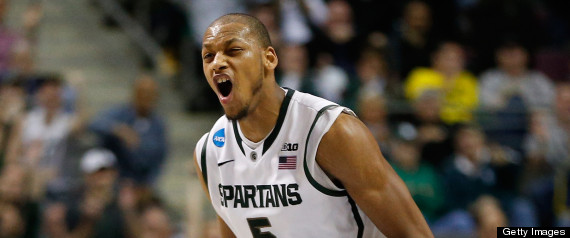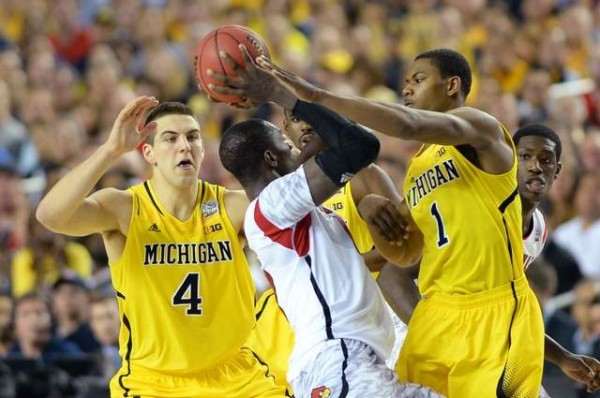Posted by BHayes on September 6th, 2013
Bennet Hayes is an RTC columnist. He can be reached @HoopsTraveler. Periodically throughout the preseason, RTC will take an in-depth look at the schedules of some of the more prominent teams in college basketball.
Watch out for Sparty in 2013-14. Tom Izzo returns nearly every key contributor from his Sweet 16 squad of a year ago, with only bruising big man Derrick Nix since departed. More good news for East Lansing’s finest: the Big Ten shouldn’t prove quite as challenging as it did last season as fellow top-four finishers Indiana, Michigan, and Ohio State all suffered major personnel losses in the offseason. That may mean some turnover at the top, especially with a number of teams in the bottom half of the conference looking improved from a season ago. So, sure – you can expect a little reshuffling at the top of the Big Ten. But with the returns of Keith Appling, Gary Harris, and Adreian Payne (among others) to East Lansing, you should also feel pretty safe in believing that Sparty will be right where they always are come March – in the hunt for a Big Ten title, preparing themselves for a sustained Tournament push.

The Emergence Of Spartan Big Man Adreian Payne Makes Michigan State A Scary Team (Getty Images)
- Team Outlook: Despite the arrival of a relatively underwhelming freshmen class – neither center Gavin Schilling nor shooting guard Alvin Ellis has the look of a minute-eating freshman, Tom Izzo’s cupboard is fully stocked. The backcourt features the Spartan’s two top scorers from a year ago in Keith Appling (13.4 PPG, 3.3 APG) and Gary Harris (12.9 PPG, 41% 3PT). Both battled nagging injuries throughout last winter, so an offseason of rest and rehabilitation may have been just what the Spartans needed although Harris appears to have suffered a temporary setback with a sprained ankle that will keep him out until at least the start of practice. With another year under their belt and improved health (knock on wood), there should be an expectation of increased, or at least more efficient, contributions from the duo. The third centerpiece of this Spartan club is center Adreian Payne, who broke out in his sophomore season posting season averages of 10.5 PPG, 7.6 RPG, and 1.3 BPG as the big man even showed an unexpectedly refined touch from deep. After only attempting two three-pointers in his first season in East Lansing, Payne went 16-42 from beyond the stripe last season, giving Izzo (and NBA scouts) hope that he might progress even further here in year three. Branden Dawson (8.9 PPG and 5.9 RPG) is the fourth Spartan returning starter, while versatile sophomore Denzel Valentine (5.0 PPG and 4.1 RPG) would seem like the top candidate to occupy the starting slot left open by the departure of Nix, an insertion that would necessitate a slide to the power forward position for Dawson. Sophomore Travis Trice (4.8 PPG, 1.9 APG) should operate as a capable backup for Appling at the point, but Tom Izzo will have decisions to make in rounding out the bench rotation beyond Trice. Matt Costello and Alex Gauna only averaged about six minutes per game each a season ago, but both could be thrust into larger roles this time around. Junior Russell Byrd and the freshman Schilling may also be options for Izzo in his quest to sort out the frontcourt rotation, as he seeks to at least partially replace the physicality and production that Nix brought to the table last season. Payne and Dawson should take care of plenty of that by themselves, and let’s also remember that this is Tom Izzo and the Michigan State Spartans – if you can’t rebound you don’t see the floor, so expect the old coach to find some tough role players somewhere on the roster. Read the rest of this entry »
| 2013-14 season preview, rtc class schedule
| Tagged: adreian payne, alex gauna, big ten, branden dawson, breslin center, Denzel Valentine, derrick nix, feature, Gary Harris, georgetown, illinois, indiana, iowa, Keith Appling, kentucky, Kohl Center, Matt Costello, michigan, michigan state, mitch mcgary, northwestern, ohio state, penn state, texas, tom izzo, travis trice, unc, wisconsin
Share this story












































